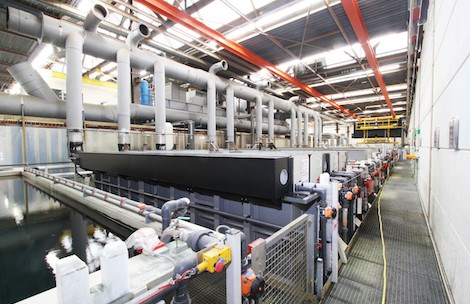Riley Surface World Announces Baker Technology New USA partner
BTA markets its products throughout the USA and Canada; primarily used manual and automatic electroplating lines, automated wet processing systems and DC rectifiers.
#surfin #masking #pollutioncontrol

Riley Surface World has announced that Baker Technology Associates will become the principle trading partner for its used equipment in North America.
Featured Content
Michael Riley, managing director of RSW and Neil Baker, president of BTA reached an agreement during the SUR/FIN 2015 exhibition in Chicago.
BTA markets its products throughout the USA and Canada. They are primarily used manual and automatic electroplating lines, automated wet processing systems and DC rectifiers.
The company works extensively in the automotive, aerospace and PCB industries and has the ability to re-configure process plants for new applications.
RSW also deals in used plating and coating process lines. In addition, it carries large stocks of ancillary equipment, including polishing, cleaning and shot blasting machines; ovens, furnaces and dust extraction systems.
Both companies view the new arrangement as having great synergy, as RSW has considerable market penetration throughout Europe, complementing BTA’s market dominance in North America.
‘We are thrilled to have a North American partner with more than 40 years of experience in the surface finishing industry," Riley says. "BTA has a detailed understanding of European manufactured metal finishing equipment and can actively deal with North American clients from within their shores and time zones.’
RELATED CONTENT
-
Defects in Hard Chromium Deposits Part I: Causes and Cures
The causes of and remedies for defects in hard chromium deposits are explored in the first of this two-part P&SF article from 1984. Photomicrographs and SEM (scanning electron microscope) photographs will illustrate that most defects in various hard chromium deposits arise from defects in the basis metal. These defects may be in the original metal surface or may be caused by preplate finishing. Homogeneous hard chromium deposits can be produced only by eliminating these defects. Practical suggestions and procedures will be given.
-
Electroless Nickel Coatings: Appearance, Gloss and Surface Morphology
For decorative coatings, appearance is the essential purpose for application, but also for functional surface finishes it becomes increasingly relevant as an added value on top of specified technical requirements. Appearance is affected by spectrum and intensity of incident light, roughness and morphology of the coating surface, optical properties of the coating material, eventual superficial oxide films, and individual perception. The predominant factor is surface roughness, which in turn depends on base material roughness, quality of substrate pretreatment, and nucleation and growth kinetics of the electroless nickel (EN) deposit. Interdependency of gloss measurements with roughness measurements and with chemical composition of coatings was investigated for new generation mid-P EN processes and compared to traditional ones.
-
A Pulse/Pulse Reverse Electrolytic Approach to Electropolishing and Through-Mask Electroetching
Research at the authors’ laboratories has focused on pulse/pulse reverse electrolysis on cathodic processes, such as hard chromium plating from non-hexavalent chemistries. This papers describes studies into pulse/pulse reverse electrolysis as applied to electrochemical metal removal processes, such as electropolishing and electroetching.


















